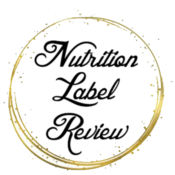We live in a constantly evolving world and today more than ever customers are combing through labels and scrutinizing the foods they are consuming. Companies are now listening with ears wide open to what the concerns are. In the food industry over the past few years there has been two driving forces behind changes in the industry, one is the consumers movement for “clean labels” and the other is the over 20 years in the making labeling reform. Both changes underline the same key concept, transparency. One of the important aspects of transparency is it simply builds trust and gives the food industry more motive than ever to meet consumer demand.
When asked why companies felt that transparency is important many responses are the same in that they aren’t concerned about short term sales, they recognize this is what consumers want from products and there is now an expectation to be mindful of ingredients, sugars, sodium levels, and claims to gain long-term success and with that comes helping consumers make appropriate choices for themselves.
Although the updated labeling deadline has been pushed back to 2020 there are over 7000 labels on the market which have been updated to the new requirements. The delayed compliance date brought relief to many companies who were in a time crunch to meet compliance, but for other companies it was priority to changeover labels prior to the deadline because simply it was what consumers wanted to see and it was paramount to gain the trust and instill transparency. These changes especially those focused on added sugar, serving size, fiber, sodium, PHOs, and soon to be GMO claims all have forced companies to take a second look at their products packaging, marketing strategies, and ingredients and dive into development work once again, but by embracing these changes companies are no longer focused only on sales they are taking a new approach with building trust with their consumers.
The other driving factor in building transparency is not controlled by the federal government, it is simply consumer demand. Over the past few years consumers have put emphasis on knowing what is exactly in their food, pushing clean labeling. This push has caused big named companies such as General Mills, Hershey’s, Campbells, and Nestle to revamp their products to meet demand. For example, Hershey’s swapped out artificial vanilla, swapped out synthetic emulsifiers, and swapped their milk for hormone-free in their chocolates but are faced with other challenges when it comes to their candies and pulling artificial colors. Many companies are also facing these challenges stating that there is an established identity for their products when it comes to appearance and taste and creating clean labels isn’t always a quick one for one swap. There is a balance of taste, quality, and affordability that companies are playing with. Kraft however, silently made the swap in what is known as the biggest “blind taste test” study releasing updated formulations to market without a marketing release. Regardless if the transition is easier for some or creating a deeper dive into development work, this is an understanding that change for demand is worth the time spent in development work.
So regardless if you are updating your packaging to meet regulatory or consumer needs, contact us today to help with making this transition.

